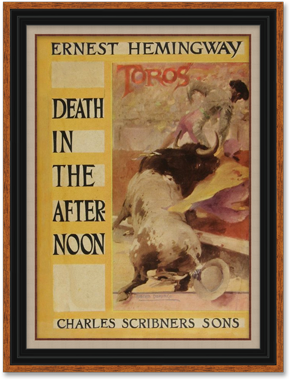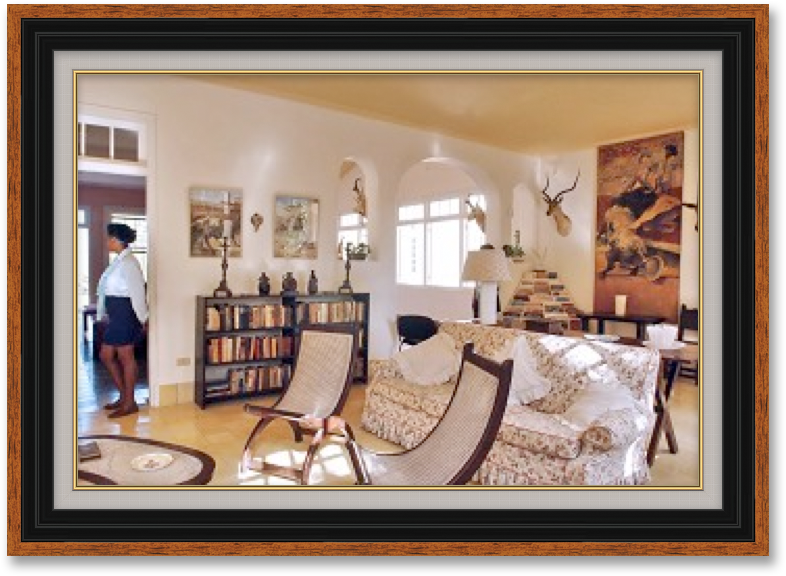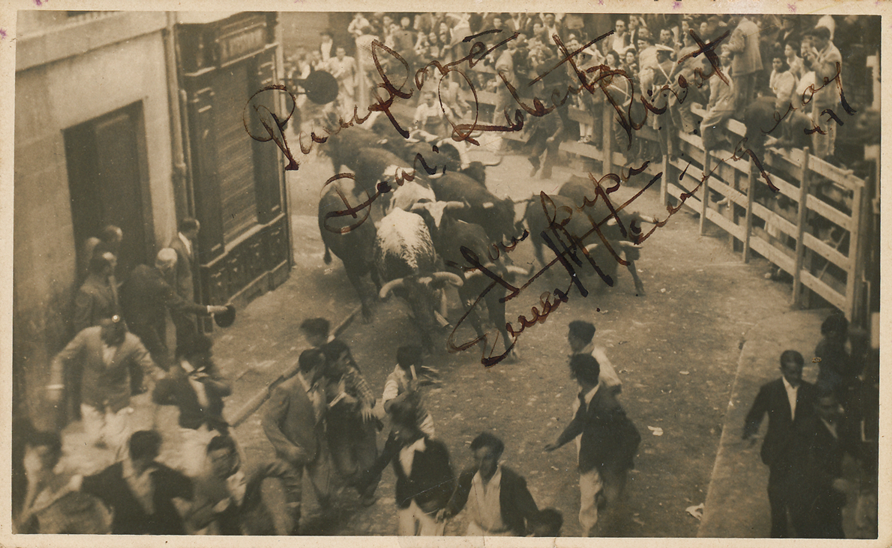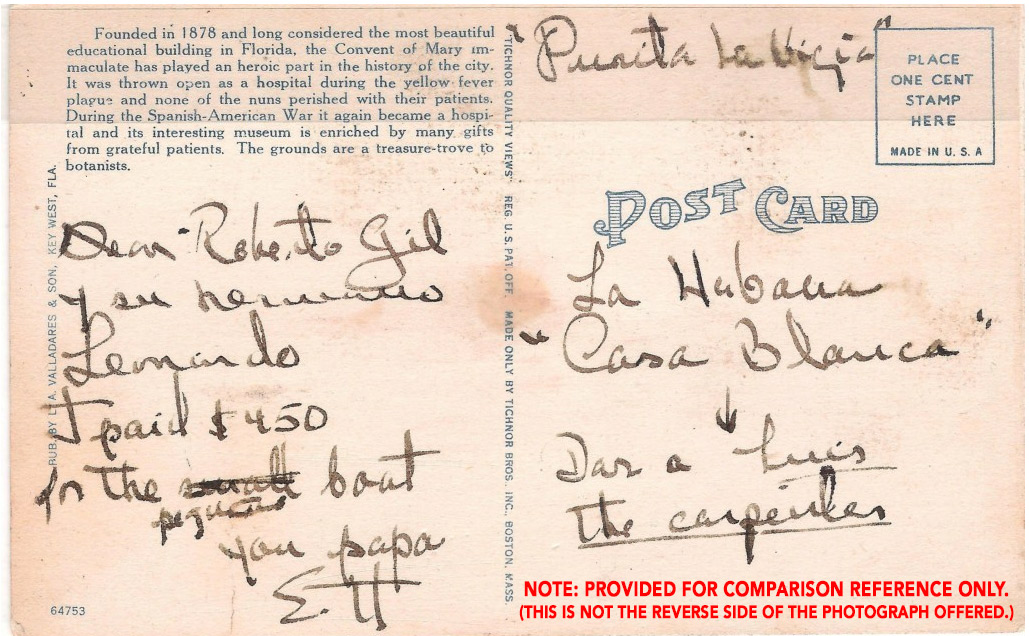Ernest Hemingway
Ernest Hemingway
Ernest Hemingway Signed Photo Running of the Bulls - 1947
Exceptionally rare 3″ x 5″ photograph of the famed running of the bulls in Pamplona, Spain—with excellent association content—signed by Ernest Hemingway in 1947. Inscribed to his friend, the artist Roberto Domingo y Fallola—Spain’s most famous painter of bullfights, and whose painting illustrates the cover of Hemingway’s book Death in the Afternoon —the inscription reads:
Pamplona
Dear: Roberto / [Retreat?]
You Papa
Ernest Hemingway ‘47
Accompanied by letter of provenance establishing authenticity. This photograph is also featured on the official Roberto Domingo website. Also shown in images (though not included) is a postcard that sold elsewhere, depicting Hemingway’s cursive for “Roberto” and “you papa” in nearly identical form, provided as an exemplar helping to establish an otherwise difficult interpretation of his writing.
Though it is unknown whether he was in Pamplona in 1947, that year was a significant one in the life of Ernest Hemingway. In a small ceremony in June 1947, at the U.S. embassy in Cuba, Hemingway was awarded a Bronze Star for his service as a war correspondent for having circulated “freely under fire in combat areas in order to obtain an accurate picture of conditions. Through his talent of expression, Mr. Hemingway enabled readers to obtain a vivid picture of the difficulties and triumphs of the front-line soldier and his organization in combat.”
Hemingway became a bullfighting aficionado after seeing the Pamplona fiesta in the 1920s, which he wrote about in The Sun Also Rises. In another book, Death in the Afternoon, Hemingway explored the metaphysics of bullfighting—the ritualized, almost religious practice—that he considered analogous to the writer’s search for meaning and the essence of life. In bullfighting, he found the elemental nature of life and death.

Death in the Afternoon was published by Scribner’s in September 1932. As eloquently described by Miriam B. Mandel in her book A Companion to Hemingway’s Death in the Afternoon (Camden House, 2004):
“The most arresting feature of the dust jacket is the painting by Roberto Domingo (1883-1956). Under the word “Toros”, a powerful looking bull is pursuing a banderillero who trails a swirling cape of yellow and magenta, as he leaps over the barerra into the confetti-colored crowd. So close is the man’s escape that he seems to be helped over the fence by the bulls approaching horns. The man, however, is not the protagonist of the scene. The center of attention is the charging bull—a splendid animal, with a dappled gray body and a handsome black head outlined against the red barrera. There is power in the broad back and in the hump of muscle that surges up from behind his horns, there is speed in the splayed legs and sinuous line of the spine from neck to tail, and danger in the solid curves of the sharp horns.”
Toros (1923) is an oil painting, one of 18 painted by Domingo between 1915 and 1942, to advertise bullfight festivals in Valencia. The original painting was acquired personally by Hemingway, and still dominates the parlor of his Finca Vigia home in San Francisco de Paula, Cuba (now a museum).

Any discussion concerning bullfighting would be incomplete without some mention of the controversy surrounding it. To that end Hemingway commented, “Anything capable of arousing passion in its favor will surely raise as much passion against it.”
As an aside, “Death in the Afternoon” also refers to a cocktail invented by Hemingway: “Pour one jigger absinthe into a Champagne glass. Add iced Champagne until it attains the proper opalescent milkiness. Drink three to five of these slowly. Note: After six of these cocktails The Sun Also Rises.”


